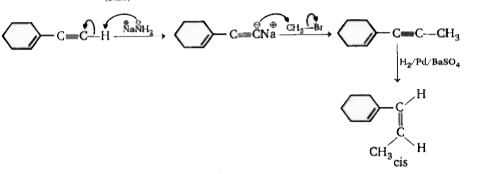 CH(i)NaNH2,NH3−−−−−−−−−−→(ii)CH3Br(A)H2−−−−−−−−→Lindlar catalyst(B), Product (B) is :Solution in Kannada
CH(i)NaNH2,NH3−−−−−−−−−−→(ii)CH3Br(A)H2−−−−−−−−→Lindlar catalyst(B), Product (B) is :Solution in Kannada




The correct Answer is:C
Topper's Solved these Questions
Similar Questions

In each reagent box write a letter designating the best reagent and condition selected from the above list of reagents.
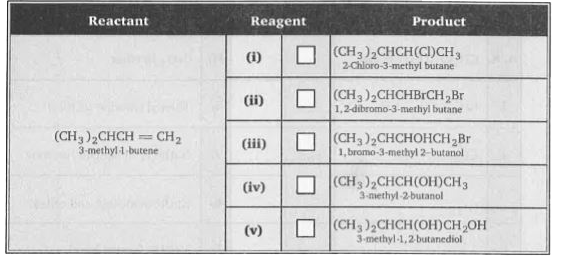 07:42View Solution
07:42View SolutionNumber of chiral isomers are:
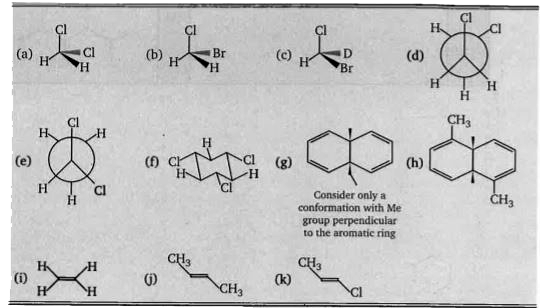 06:54View Solution
06:54View SolutionComplete the following reactions: a. H−C(A)≡C−H1mol−−−−→NaNH2(B)CH3Br−−−→(C)
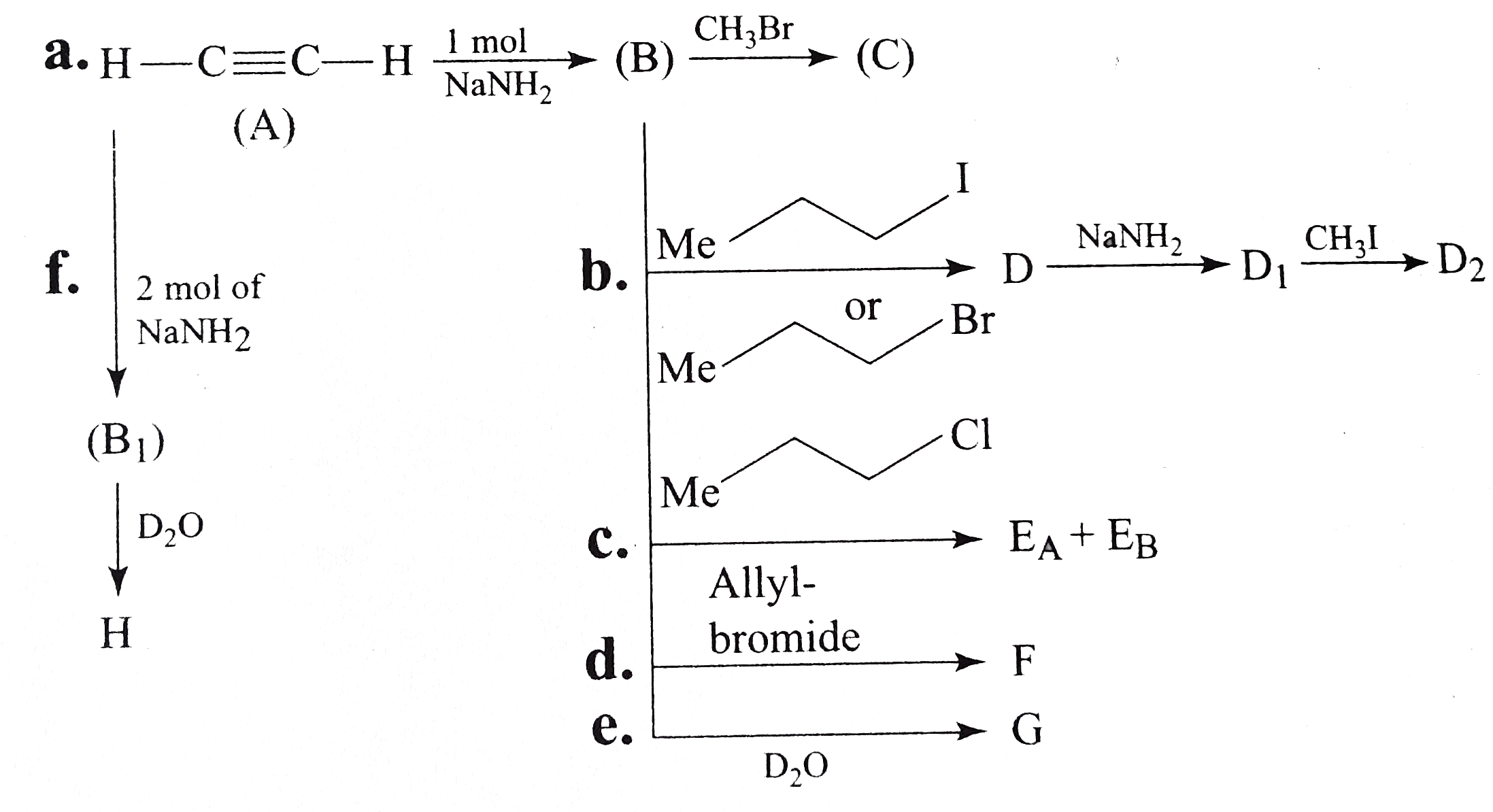
g. H−C≡C(A)−H1mol−−−−→NaNH2(B)Br(CH2)8Br−−−−−−−−→(C)
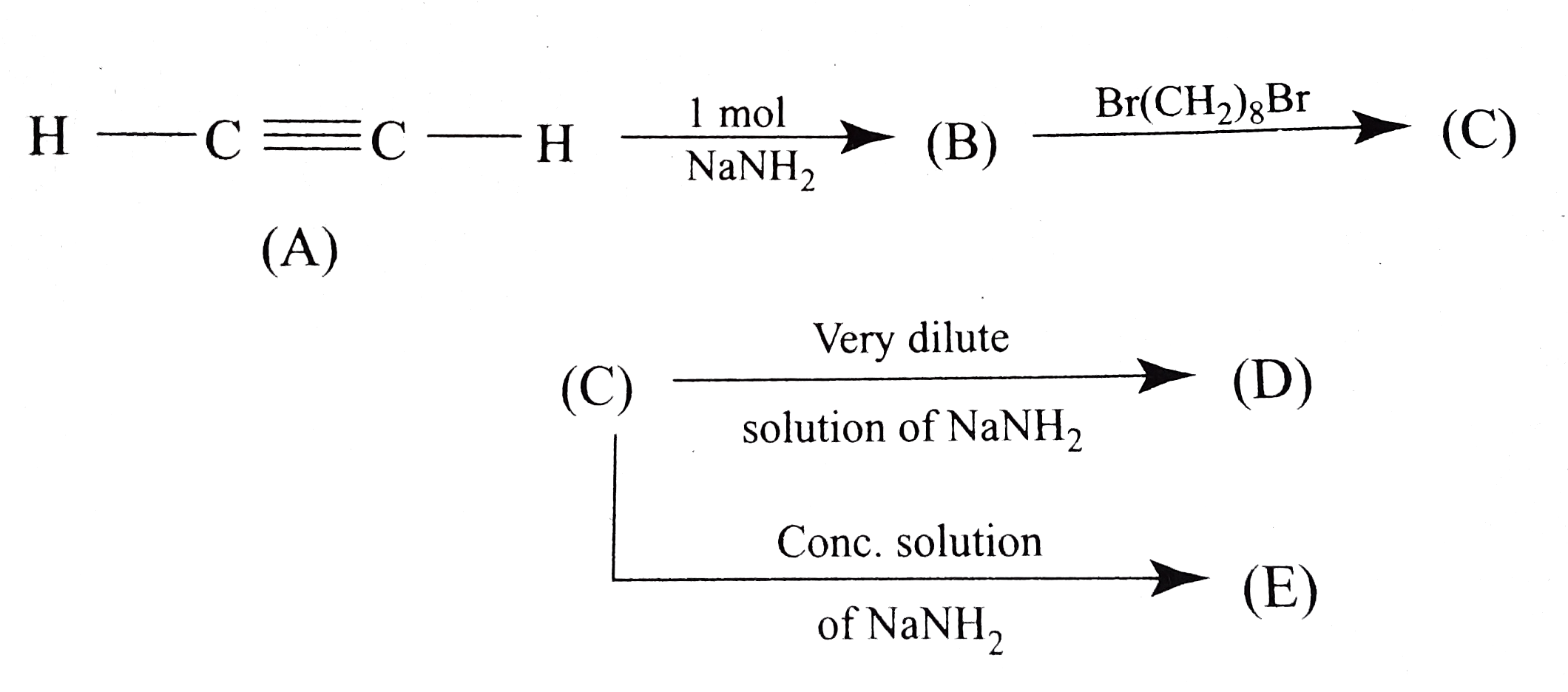 01:57View Solution
01:57View SolutionH_(3)C-CH_(2)-overset(CH_(3))overset(|)(CH)-underset(O)underset(||)(C)-NH_(2) overset(Br_(2)+KOH)underset(Delta)rarr A overset(1.CH_(3)I("excess"))underset(2.AgOH,Delta)rarr B The major product (B) is:
04:34View SolutionNr−(CH2)12−C≡CHNaNH2−−−−→(A)Lindlar−−−−−−−→Catalyst(B), Product (B) is:
02:03View SolutionCH2∣Br−CH=CH−CH2∣BrZnCH3OH−−−−−−→ Product The predominating product is
02:15View SolutionThe major product of the following reaction is : {:(CH_(3)CH_(2)CH-CH_(2) ),(" |"" |"),(" "Br" " Br):} underset(underset("in liq" NH_(3))(II. NaNH_(2)))overset("I. KOH alc")rarr
02:37View SolutionThe major product of the following reaction is :
CH3CH2C∣BrH−C∣BrH2I.KOHalc.−−−−−−−−−−−−→II.NaNH2in liq.NH302:48View Solution
(i)NaNH2,NH3(ii)CH3−Br−−−−−−−−−−−−−−−−−−−→(A)(H2 Lindlar'scatalyst)−−−−−−−−−−−−−−→B03:37View Solutionअभिक्रिया में
H−C≡CH(i)NaNH2/liq.NH3−−−−−−−−−−−−−→(ii)CH3CH2Br
X(i)NaNH2/Hq.NH3−−−−−−−−−−−−−→(ii)CH3CH2BrY.
X और Y है01:57View Solution1-"Pentyne" underset(CH_(3)I, "THE")overset(NaNH_(2))rarr X underset("Lindlar catalyst")overset(H_(2))rarr Y, Y is :
02:58View SolutionNr−(CH2)12−C≡CHNaNH2−−−−→(A)Lindlar−−−−−−−→Catalyst(B), Product (B) is:
02:55View Solution
(i)NaNH2,NH3−−−−−−−−−−→(ii)CH3Br(A)H2−−−−−−−−−→Lindlar catalyst (B),View SolutionMeCH_(2) C -= CH overset(NH_(3)//NaNH_(2))(rarr)A overset(Et Br) (rarr) B, A And B is
13:29View SolutionIn the reaction H-C-=CH underset((ii) CH_(3)CH_(2)Br)overset((I) NaNH_(2)//liq. NH_(3))rarr X underset((ii) CH_(3)CH_(2)Br)overset((I) NaNH_(2)//liq.NH_(3))rarr Y X and Y are .
03:36View SolutionComplete the following reactions: a. H−C(A)≡C−H1mol−−−−→NaNH2(B)CH3Br−−−→(C)

g. H−C≡C(A)−H1mol−−−−→NaNH2(B)Br(CH2)8Br−−−−−−−−→(C)
 03:29View Solution
03:29View Solution


